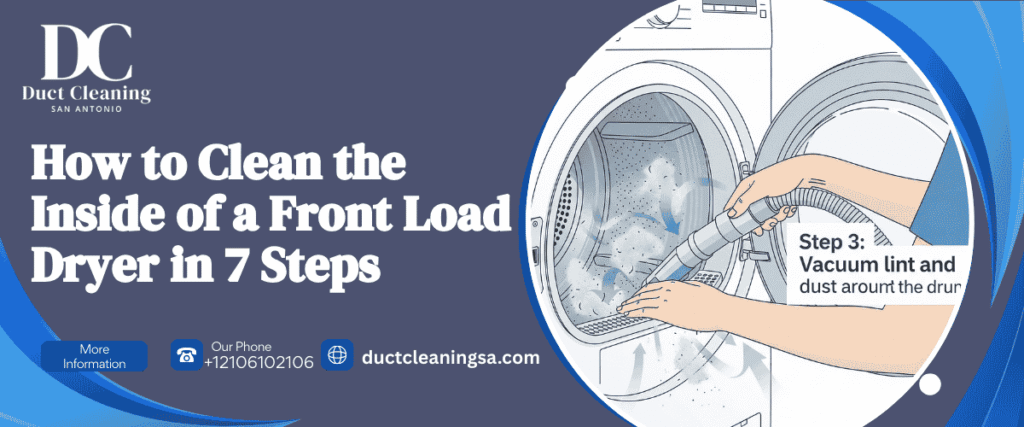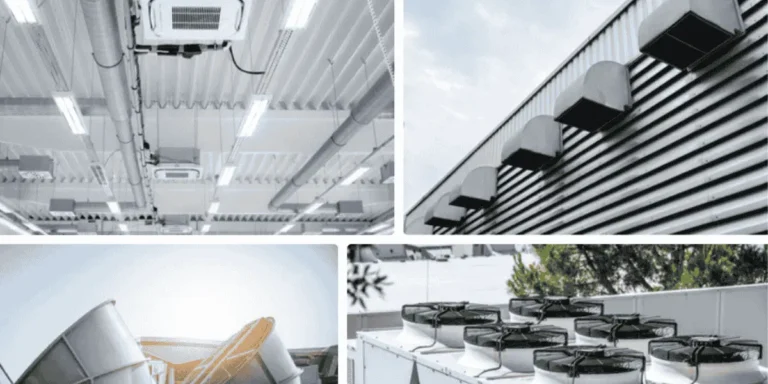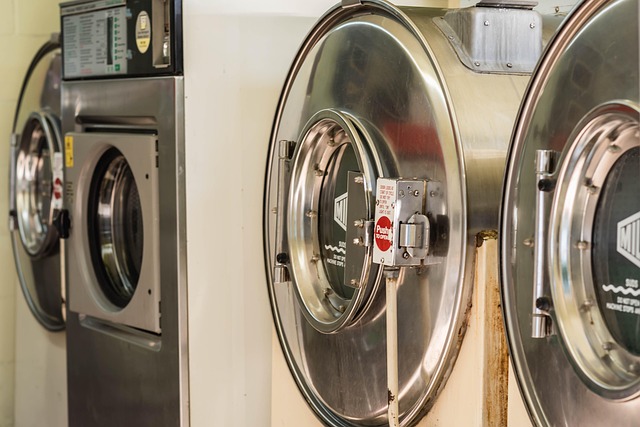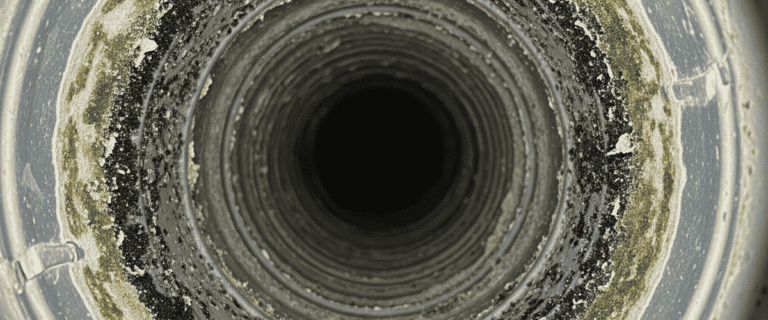Key Takeaways
- To lower the chance of fire and keep airflow unimpeded, clean your lint trap, vent and drum. Be alert to warning signs— longer dry times, odd sounds— and clear blockages soon.
- Keep it energy efficient—clean your lint screen and vent system to reduce cycles and electricity consumption. Plan regular service to maintain performance year-round.
- Safeguard clothes and more by swabbing the drum and seal after every load, to avoid lint transfer, stains and odors. If you’re cleaning fabrics and interior surfaces, use a soft cloth and mild cleaner to prevent damage.
- Help extend appliance life – check the vent hose, ducts and seals regularly to avoid overheating and motor strain. Swap out worn parts and patch leaks early to prevent budget-breaking repairs.
- Its very detailed – unplug the dryer, clean the lint screen, scrub the drum, clean the rubber seal and vent system. Employ safe cleaners and spot test new items.
- Establish a maintenance rhythm for simple after-each-use wipe-downs, monthly deep cleans, and an annual vent system inspection. Change depending on household size, usage, and manufacturer recommendations.
Cleaning front load dryer interior involves removing lint, dust and residue from the drum, baffles, lint screen housing, door seal and vents. Routine attention reduces smells, decreases drying time, and minimizes fire hazard.
Hot locations are the rubber gasket, moisture sensors and exhaust route. Grab a soft cloth, some mild soap, white vinegar and a long brush. Unplug and cool for safety.
What’s next, steps, timing, signs that a deeper clean is needed.
Why Clean Your Dryer?

Cleaning the inside and air path of a front load dryer minimizes fire hazards, accelerates drying, preserves materials and extends the life of the machine. It matters in any home because lint is flammable and heat is constant and air flow can clog fast.
Fire Prevention
Lint is dry, fine, and extremely flammable, it can catch fire within minutes as heat and airflow are restricted and build up. Pull it from the lint trap after every load, then clear the vent path and drum on a regular schedule.
Target the filter housing, vent hose, outside vent hood and corners where fibers accumulate. Check and clean the vent and ductwork to prevent the deep clogs that feed fires.
Clogged vents cause home fires and blocked ducts trap hot air that ought to escape from the appliance. For long runs of ducting, inspect joints and elbows more frequently.
Ditch flammable cleaners and no fabric softener build-up on your drum or filter. Residue can coat the lint screen and impede airflow in high heat.
Watch for warning signs: longer dry times, a hot laundry room, a burning or musty odor, lint on the exterior vent hood, or odd rattles. These can indicate blockages requiring immediate clearing to prevent dryer fires.

Energy Efficiency
Good airflow reduces drying time and energy consumption. Clean the lint screen and full vent system to keep air moving, which lowers energy draw and cycles per load.
Clean lint from the drum and ducts so the dryer doesn’t overwork to push hot air out. When lint chokes the path, it makes the machine run longer at high heat, which wastes power and wears parts.
Schedule routine inspections—every 2 years for a complete vent cleaning, or earlier if you notice a deceleration. Simple solutions–vacuum the filter housing, brush the duct, wash a waxy lint screen–bring back top performance.
Tackle clogs immediately to prevent increased energy bills.
Garment Care
Wipe down the drum and lint trap after every load to prevent lint transfer. Each additional cycle generates friction and heat that ruffs up fibers and fades colors.
Wipe away detergent splatters, softener smudges, and dryer sheet residue to prevent staining. A soft cloth or microfiber towel goes a long way with a little mild, non-flammable cleaner.
Clean the rubber door seal of grit, coins, and hair. These particles can stain fabric, catch on seams and create odors.
Having a clean interior means that your clothes will go through fewer cycles and experience gentler tumbling, which reduces wear.
Appliance Longevity
Regular maintenance of the vent, drum and filter saves you from motor strain, heater stress and control breakdowns. Heat stress from blockages can ruin wiring and thermostats.
Inspect and clean the vent hose and outside hood to maintain consistent ventilation and standard temperatures. Swap out crushed or long semi-rigid ducts for smooth-wall metal when you can.
Replace worn seals and cracked components quickly to keep heat in the drum and loads even.
A Thorough Cleaning Process
A safe, thorough clean enhances air flow and decreases the fire hazard as well as keeping your drapes residue-free. Schedule 45–90 minutes, more if you de-muck long ducts. Pull out your dryer to access cords, vents and lint traps.
1. Essential Preparation
Disconnect the dryer. For gas models, shut the gas valve and disconnect the line following the manual.
Remove drum and lint trap of clothes, lint and debris. Search pockets you overlooked.
Gather tools: vacuum with hose and crevice tools, dryer vent brush or cleaning kit, soft brushes, microfiber cloths, a mild detergent, warm water, and a bucket. Include a magic eraser for pen or crayon.
Slide the dryer forward to create a gap from the wall. Something to lay under and behind the unit (towels or rags) to protect floor and catch mess.
2. The Lint Trap
Take out the lint screen AND clean lint after each cycle. Having a lint‑free screen enhances airflow — a good thing for drying time and energy consumption.

Rinse the screen in warm, soapy water to remove softener and dryer sheet residue. A thorough cleaning process.
Take a long lint brush or vacuum crevice tool inside the housing. Pull out concealed clumps that can smolder or restrict air flow.
Allow the screen to dry completely prior to reinstalling. A damp screen can impede airflow and attract lint.
3. The Drum Interior
Clean the drum with a damp microfiber cloth and gentle soap. This soaks up dust, oils and color bleed.
For marks such as ink or melted crayon, spot clean with a soft brush or magic eraser. Try a small test spot first– don’t want dull areas.

Do multiple light passes instead of a single harsh scrub. Dry the drum with a clean towel. Moisture is an open door to mildew and smells.
Check for any loose fibers, pins, or residue that can color the next load.
4. The Rubber Seal
Wipe the door seal down with a soft cloth and gentle solution. Lint and detergent film gather here.
Inspect for coins, buttons and hair that can retain moisture or cause leaks. Ease back the fold to access the groove.

Wipe all around, then dry the seal thoroughly. A dry seal prevents the ingress of mold and odors.
5. The Vent System
Disconnect vent hose from dryer and wall. Take advantage of a vent cleaning kit or flexible brush to sweep lint from pipes and elbows – long runs can add time.
Vacuum the wall and dryer ports, then reattach hose without kinks. Vacuum dust on and beneath the unit. Dust the top and outside panels.

Run the dryer empty 10–15 minutes to blow out loose dust. Clean venting every 2 years, or according to manual.
- Shut off power/gas.
- Create space behind unit.
- Clear drum and lint trap.
- Wash and dry screen.
- Clean lint housing.
- Wipe drum; treat stains; dry.
- Clean and dry door seal.
- Detach and brush vent; vacuum; reattach.
- Wipe exterior and top.
- Vacuum floor; slide unit back.
- Run empty cycle for dust purge.
- Restore power/gas.
Checklist: power off; gas off; space made; dryer lint screen washed/dry; housing cleared; drum clean/dry; seal clean/dry; dryer vent brushed; hose reattached straight; exterior wiped; top cleared; floor vacuumed; empty run done; tools stored.
Tackling Stubborn Residue

Melted or ink or gummy residue in a front load dryer. Figure out what you’re looking at, then pair the approach and implement accordingly to prevent any harm. AVOID plastic scrapers, nylon brushes, soft cloths, mild cleaners. Avoid steel wool and harsh abrasives that can scratch the drum.
When necessary, allow solutions to remain on the surface for 10–15 minutes prior to scrubbing. For a little extra oomph, go for a baking soda paste (baking soda + water) or a vinegar combo. As a precautionary measure, scrub the lint screen with warm, soapy water once a month.
- For stuck film: apply baking soda paste, wait 15 minutes, then wipe
- For broad residue: add 2 cups white vinegar to the drum, run warm cycle
- For light stains: mix 1 cup white vinegar with 3.8 liters warm water, wipe
- For parts you can remove: soak 10–20 minutes in warm, soapy water
- For soap or mineral film: start a cleaning cycle, pause, soak 1 hour, resume
- For any tough spot: use a nylon brush with gentle strokes, rinse well
Melted Items
Let the dryer cool to room temperature. Heat will smear plastic or wax and spread it thin over the drum. Scrape with a plastic spatula or an old card to dislodge hardened bits. Work in small passes to prevent edges from scraping the surface.
For residue lines, dab a baking soda paste, sit 15 minutes, wipe with a damp cloth. Follow with a rag soaked in mild dish soap or vinegar solution. A 1 cup white vinegar to 3.8 litres warm water mix works wonders as a final wipe. Rinse with plain water, dry the drum, then run an empty warm cycle to flush out remnants.
Ink and Dye
Blot ink with rubbing alcohol on a soft cloth. Press and lift, don’t rub, rubbing spreads the stain and drives color into micro-scratches. If marks persist, dab a little alcohol again and wait 10 minutes. Wipe, then clean with a mild soap and water solution and rinse.

For widespread dye haze, pour 2 cups white vinegar into the drum and tumble on a short warm cycle, then check. Repeat blot-and-clean if light shadows persist.
Gummy Substances
Freeze hard-sticky gum or label glue first. Put ice cubes in a sealed bag, press on the area for a few minutes, then lightly scrape with a plastic utensil. If edges persist, move to warm, soapy water and a soft cloth.
For stubborn dots, take a toothbrush or nylon brush and scrub with light pressure to prevent scratches. Rinse, dry and check for drag with clean fingertips, repeat if necessary. For stubborn residue, soak detachable pieces in warm sudsy water for 10–20 minutes, then wipe dry.
Safe and Effective Cleaners
Use cleaners that dissolve lint, oils and residue without damaging the drum, baffles or rubber seals. Suit it to the buildup and your preferences, and always spot test first.
Keep the area safe: pull the dryer about 30 cm from the wall for space, unplug it, and let the drum cool before you start. Proper cleaning encourages airflow, reduces energy consumption, and helps prevent fires.
Natural Solutions
White vinegar and water (1:1) handle light film and odor. Spray onto a soft cloth and wipe the drum, door glass, lint trap housing, and gasket.
The gentle acid slices residue but remains safe for stainless steel and most plastics. For stains or waxy buildup, combine baking soda with a small amount of water to create a paste.
DAB it on stains, leave 5-10 mins, rinse with a wet cloth. It lifts dye transfer, melted crayon marks, and fabric softener residue without scratching.
Rinse is mandatory. Wipe down all contacted surfaces with a fresh, moist cloth to eliminate any grit or soda residue.
Then dry with a lint free cloth to keep fibers out of sensors and the lint screen. To complete, leave a door open for 30 minutes to dissipate vinegar odor.
Dryer empty for 10–15 minutes to blow out dust you loosened, and clear any dampness from seams and the vent path.
Commercial Products
For tougher residue, try purpose-made dryer interior sprays or wipes marked non-abrasive and stainless steel and rubber safe.
These formulas break down fabric softener residue more quickly than DIY blends! Read and follow the bottle directions: contact time matters.
Use with a microfiber cloth – not a scouring pad. Wipe the drum, gasket folds and lint trap frame, then rinse with a damp cloth.
Store cleaners in a cool dry place, away from heat or open flame, out of reach of children and pets.
Combine commercial cleaners with a dryer cleaning brush to get under baffles and into the lint trap housing. A lint-free trap and translucent venting enhance airflow, making every clean more efficient.
What to Avoid
Leave the gasoline, the aerosol solvents, and any flammable chemical off or too close to the drum. Heat + fumes is a genuine fire hazard.
Don’t utilize steel wool, magic-eraser type pads or gritty powders. They scratch the drum and scuff the gasket, which can catch additional lint down the road.
Not bleach or strong acids. They eat through metal, seals, and can hang toxic fumes in a warmed room. Mixing cleaners can be dangerous.
Other combos emit toxic fumes. Stick to the owner’s manual, clean venting every couple years at minimum, and employ a vent brush to clear away lint.
Keep approximately 30 cm clearance behind your dryer to minimize kinks and plan to have your vents inspected earlier if drying time increases.
The Unseen Consequences
Neglecting interior cleaning on a front-load dryer typically buries issues until they balloon into repairs, exorbitant bills, and safety hazards. Most issues start small: faint smells, longer cycles, or a lint screen that looks fine but isn’t.
Look out early, because carelessness can hurt health, fire, and mechanical life.
- Heightened fire hazard from lint accumulation in vents and heater locations.
- Mold and mildew that can transfer to clothing and the laundry area.
- Sensor errors that over-dry/under-dry or stop cycles mid-run.
- Increased power consumption, extended operating times and accelerated component abrasion.
- Carbon monoxide risk for gas dryers with blocked vents.
- Smells that spill onto fabrics and hang in the drum.
- Pests nesting in clogged vents, chewing and blocking airflow.
Mold and Mildew
Wipe down the drum and rubber door seal after each wash. Wipe the gasket folds where water sits. If the room is humid, leave the door open to allow air circulation.
Use a 1:1 vinegar-water mix on the drum and seal, or an antibacterial wipe on the gasket. Rinse and dry with a lint-free cloth.
Search for moisture in hidden areas. Pull the lint trap, wipe its housing and inspect the vent hose for moisture or lint paste. If you see black spots or slime, power down and clean the entire route.
Change out seals that remain stained, cracked or moldy. A new door gasket seals in leaks, reduces odor and keeps the laundry area fresher.
Sensor Malfunctions
Protect sensor bars from moisture and lint so dryer can accurately read fabric dampness. Over-suds from fabric softeners can coat sensors and confuse cycles.
Wipe clean sensor bars with mild soap and a soft cloth. Stay away from abrasives. Wipe, rinse with a damp cloth and dry.
If towels are still damp following a “dry” beep, do the rinse again. Inspect for corrosion, loose wires or warped mounts in regular maintenance.
If crashes continue, reset the dryer as in the manual. Certain models require a power-cycle, others a control-panel reset. Neglect costs add up: poor sensor data means repeat runs, wasted energy, and early heater failure.
Lingering Odors
Vinegar breaks film and smell. Run a hot cycle with a vinegar-soaked towel. Repeat if smells come back after heavy loads.
Take out and clean the lint trap, screen housing, and vent cover. Dry well before reinstall.
Air out the drum with the door open overnight. Proper ventilation prevents moist air from stagnating.
Reduce dryer sheets and liquid softeners. They shed waxy residue that ensnares odors and clogs sensors. Try wool balls or reduced-dose products instead.
Your Dryer Maintenance Cadence
Establish an easy cadence to keep your dryer’s interior clean, dry, and safe! Cluster activities by their ideal frequency, and then tweak based on your dryer usage, your home’s square footage and the manufacturer’s recommendation in the owner’s manual. A brief checklist near the machine helps keep it on schedule.
After Each Use
Clear the lint screen once per cycle. Pull it out, swipe the mat of lint off with your hand, then inspect the inside of the drum and around the filter slot for loose fibers. This little action reduces fire danger and keeps your heater and airflow consistent.
Wipe the door glass and rubber seal (gasket). A damp microfiber cloth sweeps lint and moisture. A mild soapy soak wipes away residue from softeners. Catching this grime early prevents stinky odors and ensures the seal stays tight.
Prop the door open for 10–20 minutes to air out the drum and prevent mildew. As you unload, hear for scraping, grinding, or thumps, and note any hot or electrical aromas. New noises or smells can frequently indicate a loose baffle, worn roller or vent problem that requires quick inspections.
Monthly Checks
Deep clean the lint screen with warm soapy water and a soft brush to cut through the waxy film left by sheets or softener. Rinse thoroughly and allow to dry completely prior to reuse. This resets nice airflow through the screen.
Vacuum dust around and behind the dryer. Lint collects under feet and behind the back panel, so employ a crevice tool along the baseboards and power cord route. Check the vent hose for kinks, crush points, or tears and ensure clamps are tight but not biting into the hose.
Time a normal towel load. If drying time is extended or things feel ‘crunchy’ at the seams, airflow could be restricted – typically in the vent run. This is a signal to scrub earlier.
Annual Inspection
Take apart and clean your entire vent run, from your dryer’s outlet to your exterior hood. Take off elbows, brush the duct, clear outside cover so damper swings freely. A complete vent clean enhances airflow and efficiency, and most households do well from doing this once a year.
At the very least every other year is recommended, and more frequently if you notice extended cycles or increased energy consumption. Inspect door gaskets, drum light lens, clamps and the transition duct for wear or leaks.
Switch out crushed foil hoses for a smooth metal duct where permitted. Exit Vent Kit If you have a long/complicated vent path, or issues continue, schedule a professional service visit. Following any vent work, run a 10–15 minute test cycle to flush debris and verify consistent exhaust.
Conclusion
A clean front load dryer tumbles easy, dries quick and protects clothes. Lint and film accumulate in the drum, seal, and vent. Heat sinks. Energy consumption increases. Odors appear. Knock that out on a schedule and issues disappear.
Stick with the mild tools that work. Warm water, white vinegar and a drop of dish soap takes care of most gunk. For stubborn wax or sheet film, isopropyl alcohol on a soft cloth. Rinse afterwards. Dry the inside of the drum. Examine the vent route. Test heat with a mini load.
Establish a pace. Quick wipe every week. Really clean once a month. Vent check every quarter. Got your setup or tools, need a hand? Leave a comment with your model and your blend of cleaners.
Ready to improve your indoor air quality? Whether it’s mold, dust, or routine maintenance, our experts have you covered. Contact us today to book your professional duct cleaning service.
Frequently Asked Questions
How often should I clean the inside of a front-load dryer?
Clean the drum and lint screen every month. Deep clean quarterly if you dry heavy loads, use softener sheets, or spot residue. Routine maintenance eliminates smells, enhances performance and increases the dryer’s lifespan.
What is the best way to clean the dryer drum?
Unplug your dryer. Wipe the drum down with a microfiber cloth and solution of warm water and mild dish soap. Rinse with a wet cloth. Dry the drum completely. For odors, wipe with a 1:1 white vinegar and water solution.
How do I remove stubborn residue from the drum?
For melted crayon, lipstick or gum, heat the dryer on low for 5 minutes. Unplug it. Scrape soft residue gently using a plastic scraper. Wipe with isopropyl alcohol on rag. Rinse, dry. Try a small spot first.
Which cleaners are safe to use inside a dryer?
Utilize mild dish soap, diluted white vinegar, or isopropyl alcohol. Skip bleach, abrasive powders and strong solvents. These can harm the drum finish or emit fumes that get on clothes.
Why does my dryer smell musty even after cleaning the lint filter?
Moisture and residue accumulate in the drum, vent and seals. Clean the drum, lint filter housing and vent hose. Just make sure it has good air flow. Then run an empty vinegar solution cycle, and dry the drum.
What are the risks of not cleaning a front-load dryer?
Anticipate extended dry times, increased energy consumption, persistent odors and potential staining. Lint and residue can cause stress to parts and contribute to fire risk. Regular cleaning preserves efficiency and safety.
What maintenance schedule should I follow for best results?
- After every cycle: Clean the lint filter.
- Monthly: Wipe the drum and door gasket.
- Quarterly: Deep clean the drum, filter housing, and vent hose.
- Annually: Inspect the vent run and replace worn seals.




